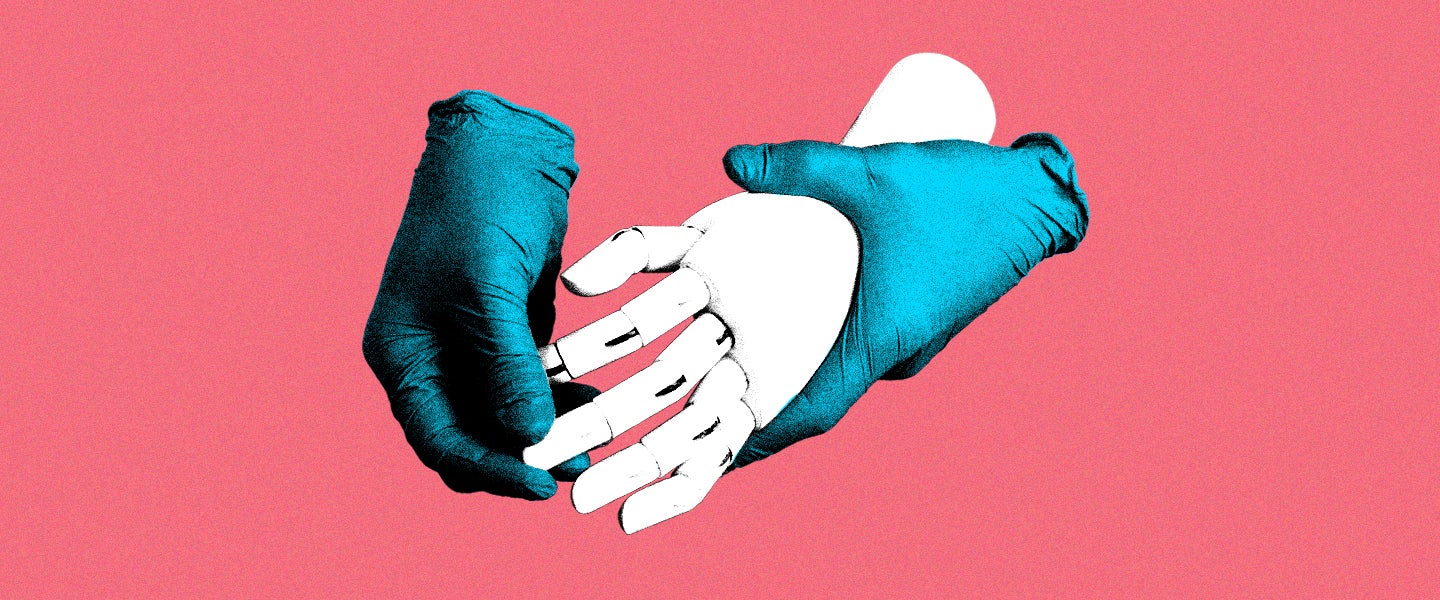Humans have been sporting prosthetic limbs for thousands of years. Archaeologists once found a wooden toe — designed to work with sandals — secured to the foot of a mummy in an ancient Egyptian burial ground. But automated bionic limbs are a much more recent innovation, with an Englishman named Robert Campbell Aird given the first one ever in 1993.
Since then, bionic limbs have continued to advance in incredible ways that perhaps only Inspector Gadget could have imagined. Even so, we’re still a long way from tech so good that people will voluntarily become part cyborg.
Jay Burkholder, general manager of Mobius Bionics, tells me that most modern bionic limbs available to consumers (there are many still in the works) are, at their best, capable of moving in many of the same ways our natural limbs can. For example, Mobius Bionics is best known for releasing the LUKE arm, the only available prosthesis that allows shoulder-level amputees to reach over their heads. “That was developed starting in 2006, and it hit the market a couple years ago,” Burkholder explains. Unlike many other bionic limbs, the multiple joints within the LUKE arm work together to create fluid motions, which means actions like picking up a burger can be done in one motion, rather than having to extend the elbow, maneuver the wrist, squeeze the fingers and so on. “One of the guys who wears the shoulder-configuration LUKE arm likes to practice Tai Chi, so he moves everything fluidly and smoothly to practice.”
Perhaps even more impressive, though, Burkholder explains that Deka Research, the company responsible for developing the LUKE arm, is working on a program that involves implanting electrodes into humans to help them control their bionic limbs. These electrodes would provide users with a sense of touch and allow them to control their limbs through intentions. “People could reach into a black box, grab something and say, ‘Oh, I’m going to grab the hard one, not the soft one,’” Burkholder explains.
Burkholder also mentions something called pattern recognition, which involves attaching electrodes to the residual limb, so the bionic limb can move based on muscle signals. Osseointegration is also a relatively new option: “You can mount the prosthetic on the person’s bone, which gives them much, much more control and gives them some tactile feedback,” Burkholder says.
All of which is a huge improvement compared to what we had just a couple of decades ago, which Patrick Kane emphasizes in a recent Guardian article:
“As time has passed and technology has advanced, so too have my limbs. Like our mobile phones, prostheses have become lighter, faster and more efficient. When I was nine, I was fitted with a lifeless silicone hand, a useless thing that was purely cosmetic, and so clumsy that I refused to wear it after the first day. Now, at 21, and a student in my third year at Edinburgh University, I wear a bionic arm with nimble fingers that move independently, which I operate using controlled muscle movements in my forearm, as well as an app on my phone. As a child I wore a stiff artificial leg attached with straps that frequently fell off; earlier this summer, I took delivery of a new dynamic right leg with shock absorption and carbon fiber blades.”
But once bionic limbs reach the level of natural limbs — or at least to where they can be controlled easily through intention-based thoughts — will they eventually surpass natural human limbs? In some ways, they already have, according to Burkholder. “The LUKE arm isn’t really stronger than a normal arm, but man, it can hold a gallon of milk fully extended — and just hold it there — forever,” he says. “Then there’s little stuff, like the hand will rotate more than a human hand will.”
“It’s not that big of a deal to make stuff stronger than current human arms,” Burkholder continues. “But there are drawbacks — one is actually mounting it onto a person and having it work for them.”
Another drawback to such evolution is the fact that demand for superhuman bionic limbs at a price that normal people can afford is virtually nonexistent. “Most amputees aren’t looking to become Steve Austin,” Burkholder says. “They’re like, ‘I just want to be as normal as I can be.’ People are working on going to the bathroom on their own. We’re not worried about trying to do the superhuman stuff.”
The focus, then, remains on getting to a place where people can fully control their bionic limbs with their minds and in doing so, feel whole again. And frankly, that’s a whole lot cooler than having a flamethrower for a hand.

